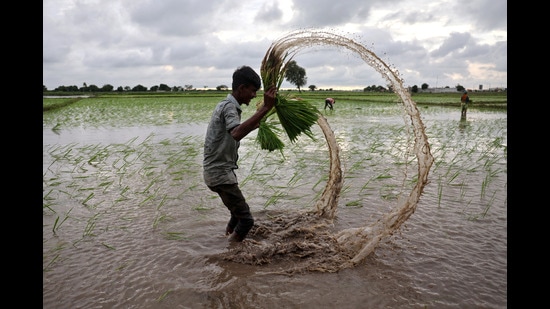In a departure from earlier years, finance minister Nirmala Sitharaman acknowledged the importance of agriculture for the rural economy, inflation (management) and the country’s food security at the beginning of her speech. She did well to highlight the urgent need to develop climate-resistant varieties of seeds, touching upon the importance of driving agri-productivity and resilience. The Economic Survey for 2023-24, too, highlighted the contradictions and challenges confronting the agriculture sector, underscoring the threat of the climate crisis. One would be forgiven for assuming such concerns indicated a reforms push. Serious reforms in the agri-food sector have been debated for a long time. But the government led by Prime Minister Narendra Modi has barely made any progress, even in important areas such as fertiliser subsidy, seamless movement of agri-produce across the states, and crop diversification in Punjab and Haryana.

Budget 2024 too has failed to present a road map for such reforms. The government may have realised that it needs to take the states on board and reach a consensus before it can do this.
Liberalisation in some areas of the agriculture and food economy has taken a backward step. For instance, the export of wheat, rice, sugar and onions is almost fully canalised through National Cooperative Export Limited (NCEL), and only cooperatives are eligible to supply to NCEL. This is similar to the United Progressive Alliance (UPA) government’s policy of canalisation of wheat and rice export through Public Sector Undertakings such as the STC, PEC, and MMTC. The budget says nothing about engaging with private trade for export of agricultural produce.
Even the free movement of produce across states faces restrictions (from state governments) from time to time. At present, West Bengal traders are finding it hard to transport potato to other states. A central law for inter-state trade of agricultural produce is long overdue.
Compared to the interim budget, allocations to various agri-related ministries have changed marginally. The allocation to the department of agriculture has increased by ₹5,000 crore, primarily due to an additional ₹4,700 crore for Pradhan Mantri Annadata Aay SanraksHan Abhiyan (PM Aasha), the umbrella scheme for price support to farmers. It is good that the government realises that market forces alone can’t give farmers a fair deal. It will be good if the money is utilised to procure pulses and oilseeds during peak arrival so that prices do not fall below the minimum support price (MSP). Due to a good monsoon, the sown area under pulses has gone up; so, the government must ensure prices do not crash. Distribution of pulses procured under PM Aasha has been allocated ₹300 crore.
The department of consumer affairs receives ₹10,000 crore for the Price Stabilisation Fund. This amount can be used to purchase an agri-commodity at MSP or an even higher price, if the government expects the price to rise. It is a good decision to provide such funds for PSF, given only a token allocation was provided in the last two years.
There were expectations of investment in creating infrastructure for the Agricultural Produce and Livestock Market Committee (APMCs) so that farmers get access to better cleaning, grading and storage facilities. APMCs already have sufficient land and it is not difficult to create high-quality cold chain infrastructure within their premises. A private-public partnership (PPP) model could have been considered for this. It seems that the government has not yet made up its mind about the role it wants APMCs to play.
The allocation to the ministry of food processing industries remains unchanged at ₹3,290 crore. This is despite the realisation that if the losses in supply chain are to be reduced, more private investment is needed, especially in developing the cold chain.
The allocation to the department of agricultural research and education, the nodal department of the Indian Council of Agricultural Research (ICAR), has been increased by just ₹65 crore over the previous fiscal year. In fact, the budget for the ICAR headquarters has been reduced. This overhead takes care of, inter alia, the salaries of ICAR scientists and staff.
The allocation to the ministry of cooperation remains unchanged at ₹1,183.39 crore, as does the allocation to the department of food and public distribution at ` ₹213,019.75 crore. The budget retains the allocation of ₹450 crore made in the interim budget for an interest subvention scheme targeting sugar mills that enhances their ethanol production capacity.
A critical observation in the Economic Survey was that food gets very high weightage in the consumer price index , and the interventions of the Reserve Bank of India (RBI) to check inflation ultimately results in targeting food inflation. This results in lower prices received by farmers. The survey recommends that “India’s inflation targeting framework should consider targeting inflation, excluding food” as higher food prices are very often not demand-induced but supply-induced.
If this recommendation is actually accepted, a rate cut may come sooner rather than later.
The Indian agriculture sector is in dire need of reforms. The budget sets the tone for this, but on actual impetus for such reforms, it leaves too much unaddressed for the agriculture minister to strategise, prioritise, design and implement.
Siraj Hussain is former agriculture secretary, GoI, and Shweta Saini is an agriculture economist and promoter of Arcus Policy Research. The views expressed are personal


